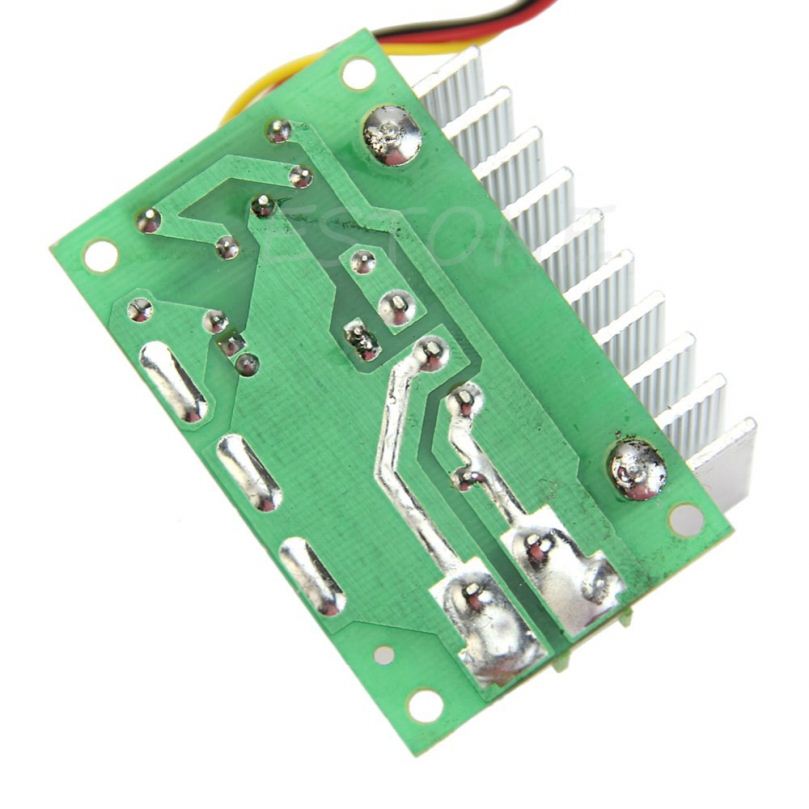Overview
Quick Details
- Model Number:
- Forward Reverse Switch
- Place of Origin:
- Guangdong, China
- Brand Name:
- RUIZE Technology Co., Ltd.
- Data sheet:
- Contact us
- Condition:
- Original and New
- Stock:
- In Stock
- MOQ:
- Samples Offer
- Warranty:
- 90Days
- Price:
- Competitive
- Mounting Type:
- SMD
- Dissipation Power:
- Standard Design Wattage
- Supply Voltage:
- Standard Design Voltage
- Operating Temperature:
- Normal Temperature
- Type:
- Other
- D/C:
- new
- Package:
- module
Supply Ability
- Supply Ability:
- 1000 Piece/Pieces per Day
Packaging & Delivery
- Packaging Details
- Tray package or Tape & Reel package
- Port
- Shanghai, Ningbo, Hongkong, Shenzhen or any other China port
- Lead Time:
Quantity(Pieces) 1 - 1000 >1000 Est. Time(days) 3 To be negotiated
- Features:
- Pulse-width modulation (PWM) is a modulation technique used to encode a message into a pulsing signal. Although this modulation technique can be used to encode information for transmission, its main use is to allow the control of the power supplied to electrical devices, especially to inertial loads such as motors.
- The average value of voltage (and current) fed to the load is controlled by turning the switch between supply and load on and off at a fast rate. The longer the switch is on compared to the off periods, the higher the total power supplied to the load.
- The PWM switching frequency has to be much higher than what would affect the load (the device that uses the power), which is to say that the resultant waveform perceived by the load must be as smooth as possible. Typically switching has to be done several times a minute in an electric stove, 120 Hz in a lamp dimmer, from few kilohertz (kHz) to tens of kHz for a motor drive and well into the tens or hundreds of kHz in audio amplifiers and computer power supplies.
- The term duty cycle describes the proportion of "on" time to the regular interval or "period" of time; a low duty cycle corresponds to low power, because the power is off for most of the time. Duty cycle is expressed in percent, 100% being fully on.
- The main advantage of PWM is that power loss in the switching devices is very low. When a switch is off there being practically no current, and when it is on and power is being transferred to the load, there is almost no voltage drop across the switch. Power loss, being the product of voltage and current, is thus in both cases close to zero. PWM also works well with digital controls, which, because of their on/off nature, can easily set the needed duty cycle.
- Feature:
- You can adjust the speed of the motor and the rotation direction.
- The max current of this controller is 40A.
- Note:
- Make sure the positive and negative connections are correct before power on. The wiring must not touch the heat sink, and it may burn down the circuit board
- Note that this is not a power module, it must be connected to the motor to speed. If not, multimeter output won"t change
- Can not be connected to AC power. Suitable for brush motor
- With positive and negative switch, potentiometer knob with switch, can use PLC to control the positive and negative inversion
- Specifications:
- Power Requirement: DC 10-50V
- Rated Current: 40 A (Maximum Output Current)
- Frequency: 25 kHz
- Control Motor Power: 0.01-2000 W
- 12 V: 480 W (max), 24 V: 960 W (max)
- 48 V: 1920 W (max), 50V: 2000 W (max)
- Regulation Range: 0-100%
- Function: Forward to Stop to Reverse
- PCB Size: 10x7.6x2.7cm/3.94x2.99x1.06inch
ABOUT US
Shenzhen Ruize Technology Co., Ltd., is a well-known electronic component company.
Over these years, adhering to the "honesty, quality first" principle, with excellent product quality, enthusiastic service, and wide range of products, we gained a high degree of trust from our customers.
No matter you are domestic or foreign businessmen, we are always ready to make you satisfied.
We sincerely welcome your business negotiations, share mutual benefit and common development.

CONTACT US







